In 1889, Robert D. Inman and Johan Poulsen organized the business of Inman, Poulsen and Company and a year later incorporated it. It eventually became known as Inman-Poulsen Lumber Company. They built a sawmill in Portland, Oregon, and operated it successfully until it burned in a fire in 1896.

The two partners were undaunted by the disaster and within ninety days built a more modern plant which they had running and cutting 100,000 board feet of lumber per day. By 1903, they had the largest lumber company in Oregon with 350 employees, later peaking at 700 employees. By 1906, due to improvements made in the plant, daily capacity and output was increased to 500,000 board feet daily. Outside the local business done by the company, the output was sold to the California trade, to increasing numbers of eastern customers, as well as to the railroads and for export shipment.
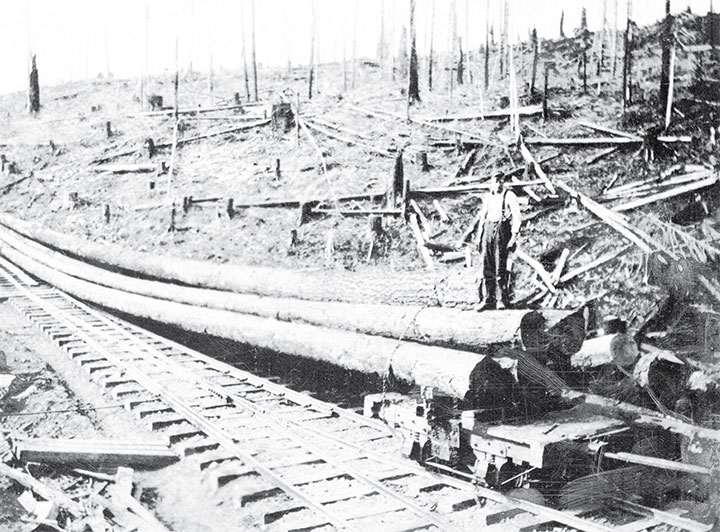
Also in 1906, the company purchased the Coal Creek Railroad Company’s narrow gauge railroad and 200 million board feet of timber at Eufaula about seven miles west of Kelso, Washington. The railroad was seven miles long and had an unspecified rod engine for power and had been in business since 1903. There was approximately 500 million feet tributary to the railroad for the company to log. This railroad had been in business since 1903 and was primarily designed and built to carry coal to Coal Creek Slough, four miles. In addition to transporting coal, logs were carried to tidewater. In October 1905, Mowery and West of Eufaula, became the owners of the railroad.
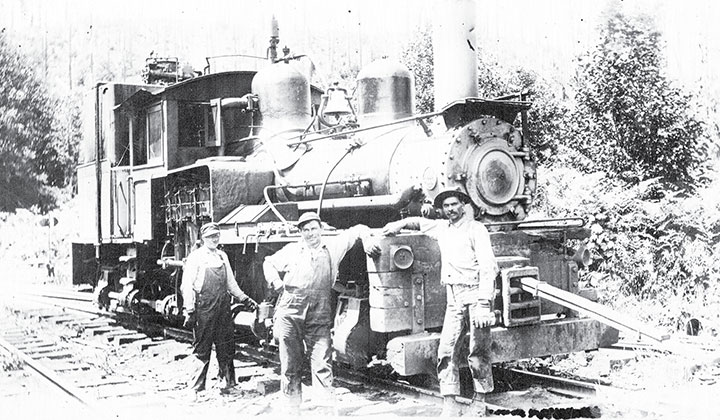
-Photo, Gordon Smith collection.
The Inman-Poulsen Company bought four, 42-inch gauge two-truck Shays for this operation and the length of the railroad was eventually extended to twelve miles. By February 1913, they had installed a Bucyrus Shovel-Crane.
The State of Washington Timber Workers Employment Guide of 1916 shows them with a four-side camp and railroad 18 miles up Coal Creek. The employment was steady with 160 employed in the woods and 15 on the railroad. Bunks were rough and they had a company store. Common labor was paid $2.25 per day.
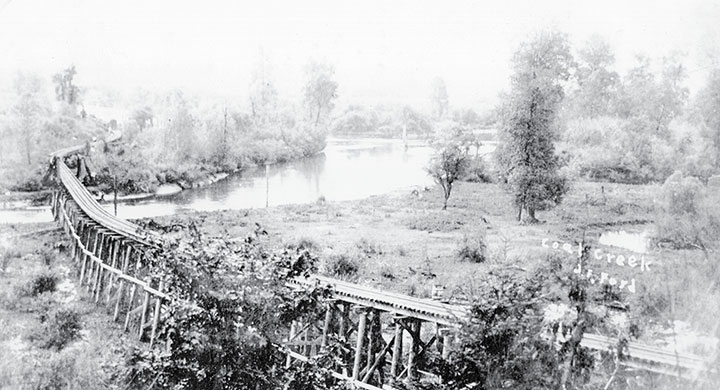
-Photo by R. Reid, John Labbe collection.
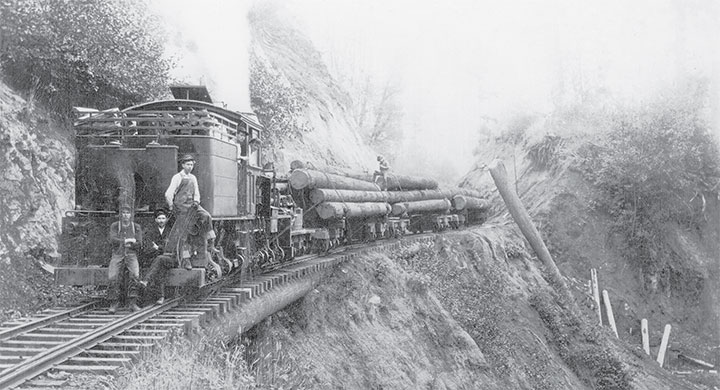
-Photo, John Labbe collection.
By March 1917, the company was running a four-side camp with J. D. Young, manager; L. A. Young, superintendent; and W. H. Peters, foreman. They had ten miles of 42-inch gauge track laid with 56 and 60 pound rails, a 33-ton Shay, a 23-ton Shay, 37 sets of homemade trucks which were of wood and floored, and 18 donkeys. They used a high lead and instituted an arrangement whereby the men were paid by the thousand feet of production.

-Photo by M. Lee, John Labbe collection.
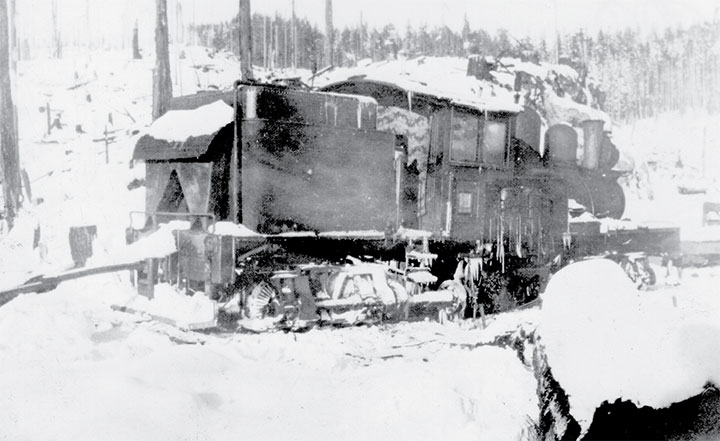
In January 1919, they were building an 1,800-foot trestle during their winter shut-down. By August of that year, the company was completing two camps in the district northwest of Kelso. One new camp had just been opened in the Scantgrease Creek district, and the other on a hill about a mile from it. The company’s main logging railroad extended from Mount Solo, on Coal Creek Slough, up Coal Creek and over the divide to Scantgrease Creek. To get into the Scantgrease district, a railway was built with 1,600 feet of 30 percent grade, and the loads were hauled up and empties let down with a donkey. The railway was completed to the camps and beyond, where the company had about four years supply.
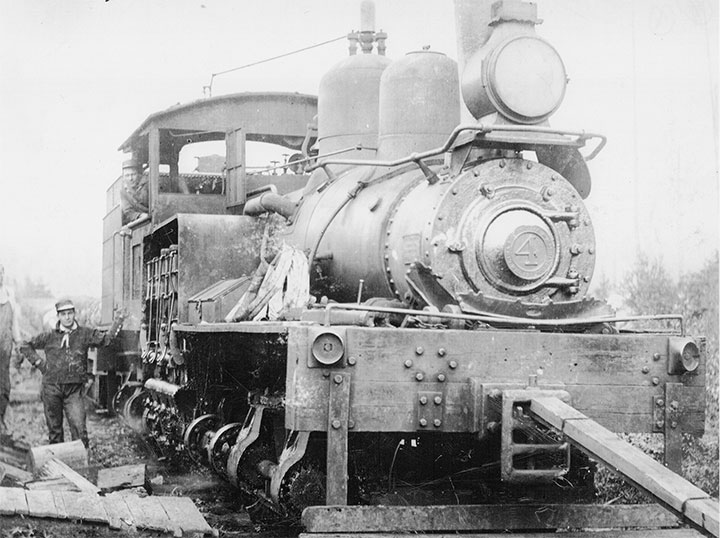
In May 1920, Robert D. Inman, the president of the company, died. He was born in Ohio, August 11, 1853, and came to the Pacific Coast in 1865.
In February 1921, the company raised the capital stock from $600,000 to $2,000,000.
The company announced, in May 1923, that they would finish logging at Mount Solo in June of that year. The equipment, which consisted of three locomotives, would be converted to standard gauge and shipped to Vernonia, Oregon, where ongoing logging operations were already going on. The equipment also consisted of 15 donkeys. Three donkeys, a locomotive and pile driver had already been shipped.
The Mount Solo camps had been in operation for twenty years.
My thanks to Phil Schnell for his help in supplying some of the photos.
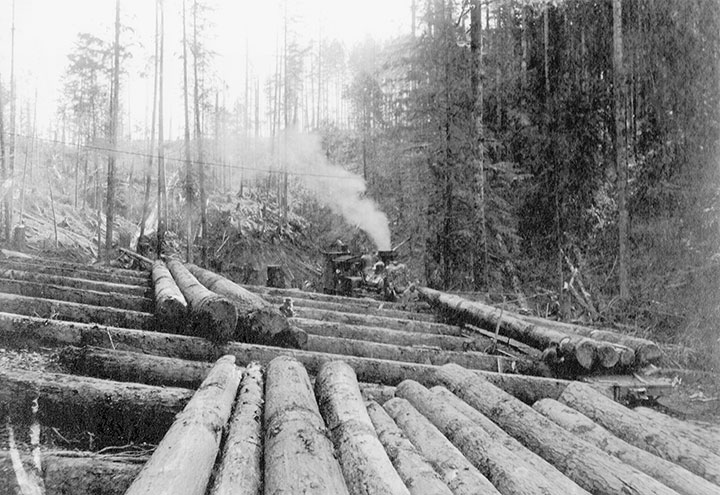
-Photo, Gordon Smith collection.